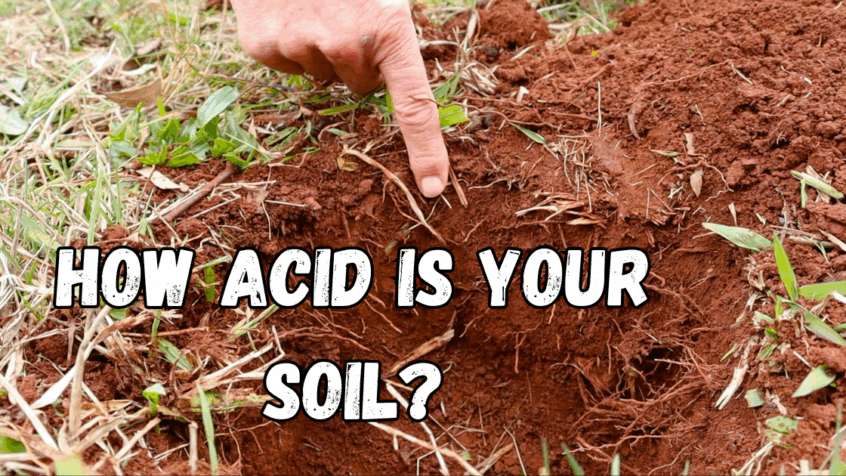Why pH Matters: How a Simple Test Can Transform Your Soil

Understanding pH is one of the most powerful tools a farmer can use. It’s the unsung hero of soil health—affecting everything from nutrient availability to plant resilience and microbial activity. Yet for too long, we’ve failed to communicate how to test and why it matters in ways farmers can apply every day.
That changes now.
In this first part of our Understanding Soil pH video series, we break down exactly what pH is, how it works, how to test it properly, and why correcting imbalances early can save you money and headaches down the track.
What Is pH and Why Should Farmers Care?
pH stands for potential Hydrogen, and it’s a measure of how acidic or alkaline a substance is. But it’s not a simple scale—it’s logarithmic. That means every single unit change represents a tenfold difference in hydrogen ion activity.
- A soil with a pH of 5 is ten times more acidic than one with a pH of 6.
- Going from pH 3 to pH 6? That’s a thousand times less acidic.
It’s why small shifts in pH can have massive consequences for plant health, nutrient uptake, and microbial life. If your soil is drifting—whether acid or alkaline—you need to catch it early before you’re fighting an uphill battle.
Common Household pH Examples
To help make sense of the pH scale, here are some everyday items:
- Lemon juice: pH ~3.5 – sour and acidic
- Vinegar: pH ~3
- Potable water: pH 6–8 – neutral
- Soap: pH ~9 – slippery and alkaline
- Concrete or ash: pH 11–12 – extremely alkaline and caustic
Soil typically needs to sit between 5.5 and 7.5 for optimal pasture and crop performance, but many Australian soils fall outside this ideal range—especially with depth.
Sampling Soil the Right Way
Most farmers test pH wrong. Here’s how to get accurate results:
- Don’t sample just from the soil you’ve dug out.
pH varies with depth, so it’s critical to sample the profile properly. - Take samples at depth intervals (every 100–150mm) and note colour or structure changes.
- Keep samples small. The tip of a knife or a fingernail-sized pinch is plenty.
- Stay consistent with your sampling order so you don’t mix them up.
Choosing the Right pH Test Kit
Not all pH kits are created equal. For Australian conditions, it’s worth using indicator kits that feature three colours instead of the cheaper single-indicator versions found in hardware stores.
The kits shown in the video are sourced from Inoculo Laboratories, designed specifically for Australian soils. They give a more accurate reading—especially useful on diverse farm landscapes.
Step-by-Step: Testing Your Soil pH
- Lay out your samples on a flat surface (an old white tile or even a hobby paint tray works!).
- Add a few drops of pH indicator solution to each sample and mix witha clean stick until paste-like.
- Use a colour fixer if necessary to sharpen the result.
- Compare the resulting colour against the chart to determine pH.
We tested a few samples in the video:
- Agricultural topsoil: pH 6
- Subsoil (100mm down): pH ~5.5
- Acid sulfate soil: pH 3.5 – toxic to almost all plants
- Acid mine drainage soil: pH 4 – poor plant performance
These real-world results show why understanding depth-based pH trends is essential.
Acid vs Alkaline Trending: What’s Happening in Your Soil?
When soil pH drops with depth, it’s called acid trending.
When it rises with depth, that’s alkali trending.
Both trends signal trouble and need different correction strategies. We’ll cover that in the next video, but the key takeaway is this: if you’re not testing your soil at depth, you’re flying blind.
Final Thoughts
Soil pH isn’t just occasional science—it’s a daily decision-making tool that should be used regularly. Understanding how pH shifts, how to test it properly, and how to act on this information can make or break productivity.
Whether you’re growing pasture, crops, or managing land regeneration, now’s the time to get confident with pH. Practice makes perfect.
🔎 Watch the full video here: Understanding Soil pH on YouTube
📦 Get the right test kit from Inoculo Labs
📩 Subscribe to the channel so you don’t miss the next part: how to fix pH issues in your soil.